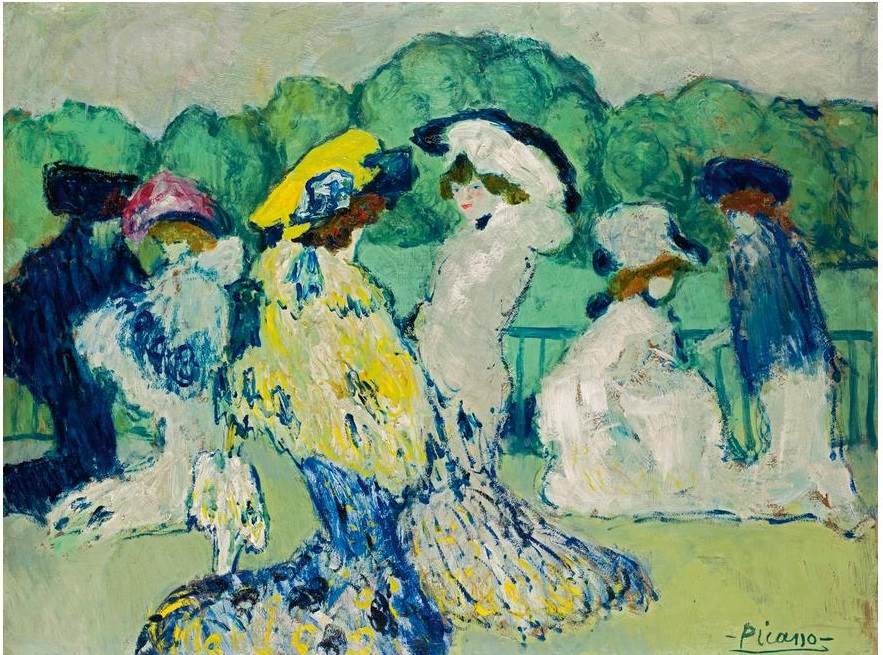art-Picasso.com
Pablo Picasso 1881-1973
©Pablo Picasso - Les Courses a Auteuil 1901
 Les Courses a Auteuil |
From Sotheby's:
Executed during Picasso’s second trip to Paris in 1901, Les Courses à Auteuil shows the young artist’s fascination with elegant and colourful figures that he encountered there. The dynamic and varied life of the metropolis, with its busy boulevards, nightclubs, cafés and public gardens, offered him a rich source of inspiration. Whilst the society outcasts, such as street beggars, blind musicians and absinthe drinkers had resonance with the young Picasso, whose talent was yet to be fully recognised and who still lived modestly, he was also attracted to the fashionably dressed beau monde and extravagant courtesans, such as the groups of ladies at the races, adorned in lavish costumes and hats, depicted in the present work. While it is possible that Picasso was introduced to members of the high society through his friends and supporters, and during the summer months attended the horse races at Auteuil and Longchamp, it is more likely that these subjects were largely derived from the artist’s imagination, fuelled by reports in the newspapers and magazines.
While the use of strong blue tones anticipates Picasso’s celebrated blue period, the overall bright palette and the decadent subject-matter of this oil evoke the fin-de-siècle Symbolism of artists as diverse as Toulouse-Lautrec and Bonnard. Reproductions of Toulouse-Lautrec’s paintings had appeared in French newspapers that were available in Barcelona and were well known to Picasso before he arrived in Paris. But the first-hand experience of these canvases and the decadent culture they portrayed increased his admiration for them and for the tradition in which they were painted. It was not only Lautrec’s draughtsmanship and the vibrant colours that impressed Picasso, but also the subject matter of the world of the cabaret and night clubs, opera and the races. In the present work, the graceful delineation of the women’s figures and the focus on their flamboyant dresses and hats bear testament to the important influence these artists had on the young Spaniard.